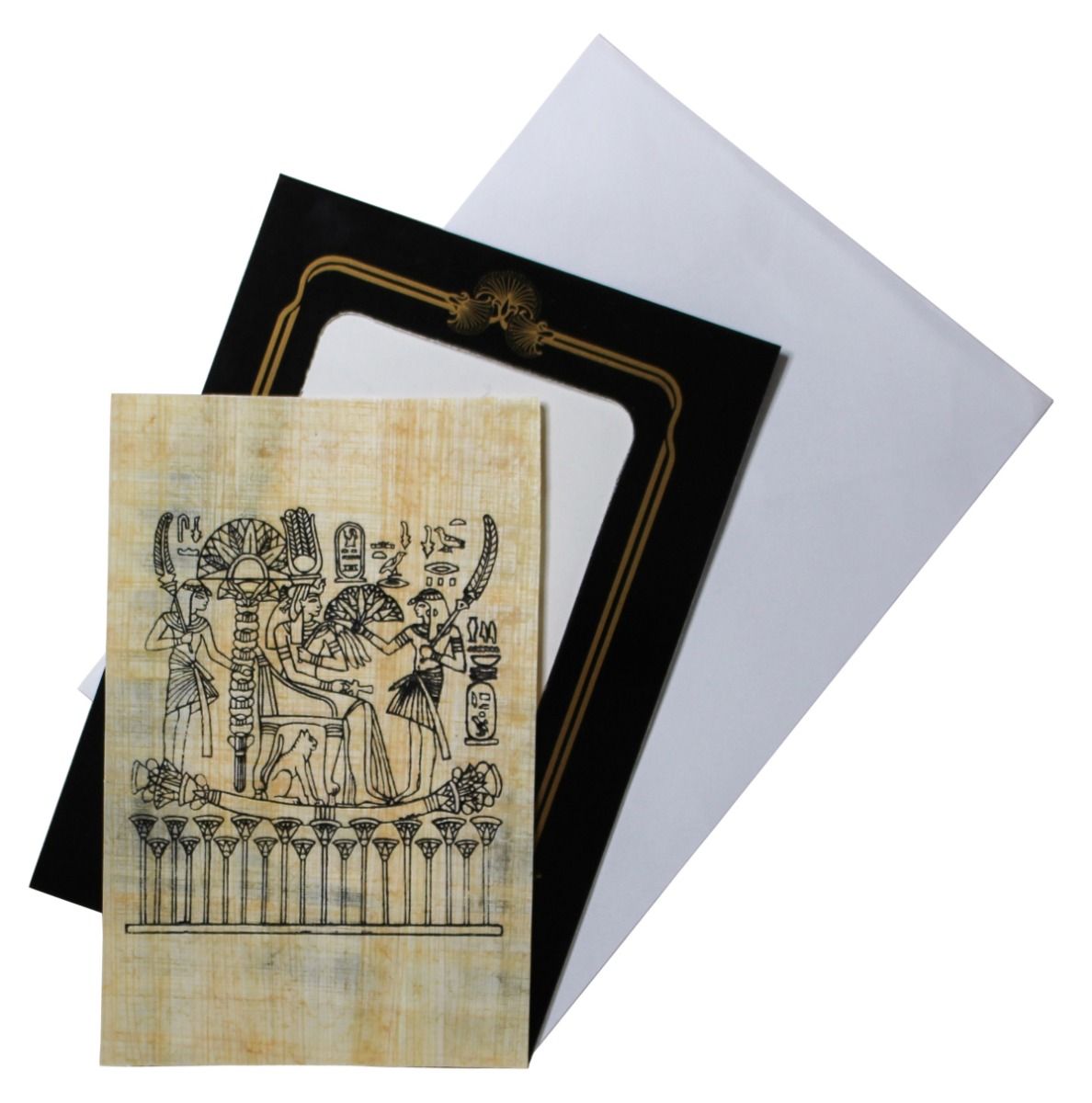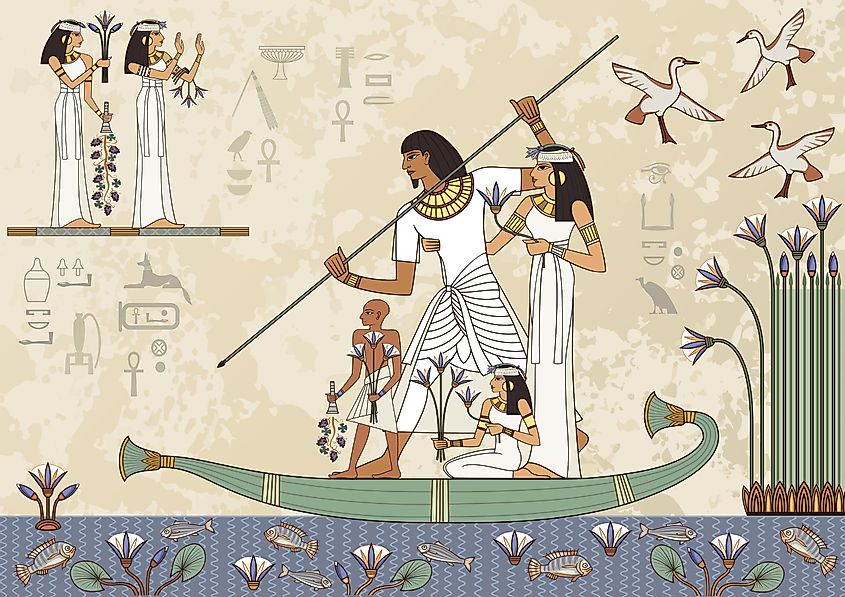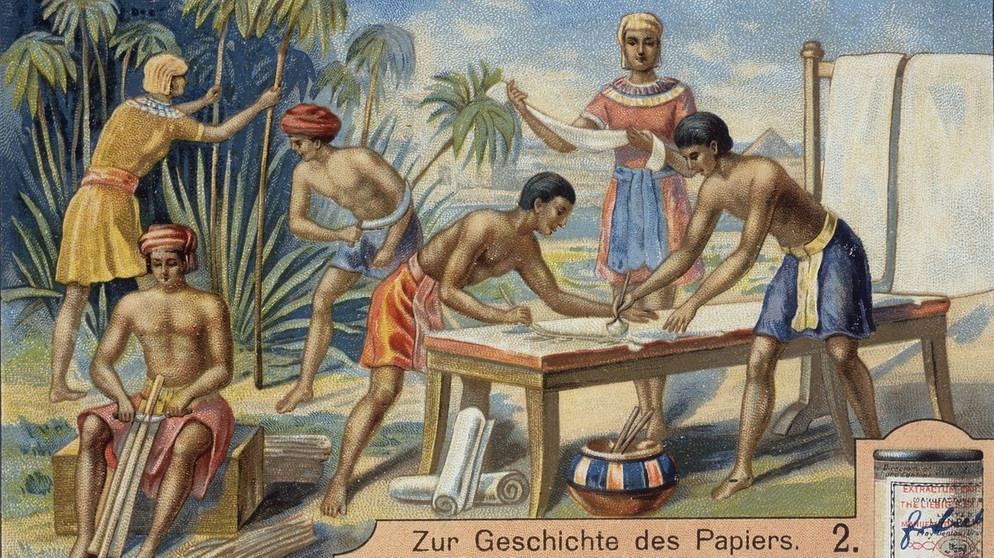Princess on the Nile Boat
Natural papyrus with outline motif 11.5 × 16.5 cm, black folding passe-partout, writing paper as well as a hanging eyelet.
Mini gallery pictures are an inexpensive introduction to papyrus painting.
The ready-painted pictures are a tasteful gift for many occasions.
To the motif
Gold relief on the backrest of a throne. The motif shows Princess Sitamun, a concubine of Amenophis III, on a Nile boat.
To paint:
12 double fibre pencil - Article No. 2701
Pilot Pintor: White, Gold, Silver - Article No. 2703
PGI papyrus
can be painted with pens and watercolours
| Aspiration scale: | Easy |
|---|---|
| Time Line: | 45 Min |
Princess on the Nile Boat
Gold relief on the backrest of a throne. The motif shows the princess Sitamun, a concubine of Amenophis III, on a Nile boat.
Sitamun was an ancient Egyptian princess of the 18th Dynasty and the first-born daughter of Pharaoh Amenophis III and his Great Royal Wife Teje. Probably in the 30th year of her reign, she married her father Amenophis III and, like her sister Isis later, became his "Great Royal Wife". This marriage did not necessarily mean an incestuous relationship, but could also have a ritual-religious character.
Papyrus boats
Boats made of bundles of dried papyrus, which grew in many places along the Nile in Ancient Egypt, were used to transport people and small loads over short distances and for river crossings. Papyrus is a light, flexible but not particularly durable material. Due to its low specific weight, it is buoyant. It is remarkable, however, that papyrus boats are always depicted in green colour. Fresh green papyrus, however, is much heavier and thus has a lower load-bearing capacity than dried material. The possession and use of these boats was also important for locomotion during the annual floods, as the fertile land was flooded and criss-crossed by numerous canals and bodies of water. Villages were often located on small elevations and could only be reached by boats. Papyrus boats were also used on religious occasions and occasionally as travelling vessels.




